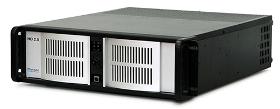- europages
- >
- COMPANIES - SUPPLIERS - SERVICE PROVIDERS
- >
- measurements
Results for
Measurements - Import export

ADVANCED MAGNETIC TECHNOLOGIES AND CONSULTING (AMT&C)
Russia
The heat capacity measuring insert is intended for measurement of the heat capacity temperature dependencies in constant magnetic field. In this insert the adiabatic method is used. The inner sample holder is equipped with the resistive heaters, resistive temperature sensors and Hall sensor. The heat capacity measurement insert characteristics: - relative measurement accuracy of heat capacity: 3 %; - sample dimensions: a rectangular bar 4×5×2.5 mm; - temperature interval – from 80 to 370 K; - magnetic field interval – from 0.02 to 2 T.
Request for a quote
ADVANCED MAGNETIC TECHNOLOGIES AND CONSULTING (AMT&C)
Russia
The thermal conductivity measuring insert is intended for measurement of the thermal conductivity coefficient temperature dependencies in constant magnetic field using stationary method. The inner sample holder is equipped with the resistive heaters, resistive temperature sensors and Hall sensor. The thermal conductivity measuring insert characteristics: - relative measurement accuracy of thermal conductivity coefficient: 3 %; - sample dimensions: a rectangular plate 22×4×2 mm; - temperature interval – from 80 to 370 K; - magnetic field interval – from 0.02 to 2 T.
Request for a quote
ADVANCED MAGNETIC TECHNOLOGIES AND CONSULTING (AMT&C)
Russia
AMT&C LLC offers the wide variety of measuring inserts under customized requirements. Measuring inserts are designed for operation with Halbach-type adjustable magnetic field source, for following applications: - ac susceptibility; - dc susceptibility and magnetization measurements; - torque magnetometry; - heat capacity measurements; - electro-transport measurements; - thermal transport measurements.
Request for a quote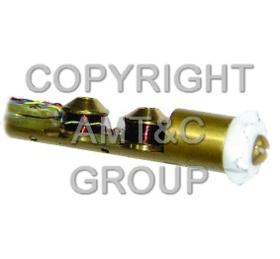
ADVANCED MAGNETIC TECHNOLOGIES AND CONSULTING (AMT&C)
Russia
Induction magnetometer allows to measure magnetic field isotherms of magnetization (magnetization versus magnetic field (M(H) dependences) in the fields up to 2 T and in the temperature interval from 80 to 370 K. Magnetization is measured by induction method. Specification: - temperature interval — from 80 to 370 К, - magnetic field interval — from 0,02 to 2 Т, - relative measurement accuracy of magnetization - 2 %, - maximal sample dimensions - Ø1.5 × 3.7 mm. Magnetometer (its measuring part) consists of the measuring insert, electronic module and control and data acquisition program and can be used together with the magnetocaloric measuring setup (which includes permanent magnet adjustable magnetic field source, liquid nitrogen cryostat, temperature controller, 2 digital voltmeters, control computer with corresponding interface and control boards).
Request for a quote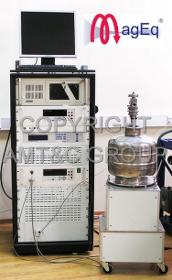
ADVANCED MAGNETIC TECHNOLOGIES AND CONSULTING (AMT&C)
Russia
LLC "AMT&C" offers automatic measuring system (AMS) for measurements of the magnetocaloric effect and other magnetic parameters. AMS includes: - Halbach-type magnetic field source with changing magnetic field based on permanent NdFeB magnets, - liquid nitrogen cryostat, - the set of measuring inserts, - data acquisition and measurements control system guided by a control computer. AMS has the following working parameters: - variable magnetic field strength - from -1.85 to +1.85 T, - variable frequency of the magnetic field change from 0.1 to 1.8 Hz (magnetic field change rate from 0.05 to 6 T/s), - dimensions of the magnetic field area with heterogeneity no more than 1 % - diameter 20 mm, length 20 mm, - working temperature region – 80 ÷ 365 К, - automatic and manual measuring modes. The basic option of AMS is the magnetocaloric effect measurement. - sample dimensions (min-max) (1-2)×(2-5)×(8-10) mm, - measurement accuracy of magnetocaloric effect: 0.1 K.
Request for a quote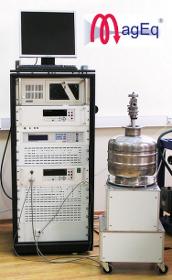
ADVANCED MAGNETIC TECHNOLOGIES AND CONSULTING (AMT&C)
Russia
AMT&C LLC for many years is engaged in design and manufacture of the measuring equipment intended for research of magnetic properties of materials. In the field of the magnetocaloric effect (MCE) these products continue own scientific interests of the AMT&C company employees, recognized experts in this realm of physics. Manufacture of the scientific equipment is based on the following core technologies, backed by patents and numerous know-how: - a wide experience in design and manufacture of complicated magnetic systems, including the adjustable magnetic field generators, controlled by a computer; - use of the most advanced products and ideas in the field of measuring technics; - the magnetic field source and data acquisition system are controlled by means of the specialized software that allows to create setups operating in automatic mode; as a rule, the LabView based software is used. Since 2009 AMT&C LLC produces the measuring equipment under trade mark "MagEq".
Request for a quote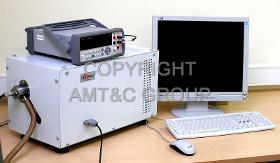
ADVANCED MAGNETIC TECHNOLOGIES AND CONSULTING (AMT&C)
Russia
Experimental setup for express measurements of the adiabatic temperature change in the room temperature range. The setup is intended for measurements of the magnetocaloric effect (MCE), namely adiabatic temperature change (ΔТ), in the temperature range from 273 to 370 K in order to get ΔТ versus temperature dependences rapidly and evaluate suitability of using of the material under investigation as a working body of magnetic refrigerators. The measurements in the setup are conducted by the direct method with the help of a thermocouple. The magnetic field change is accomplished by linear movement of the permanent magnet magnetic field source along the measuring insert. The setup operates in automatic mode under control of the program written on LabView. The setup includes: - the desktop measuring unit, - the desktop control unit, - the ΔТ measuring system, - the control computer. The enhanced algorithm of the setup operation makes possible to investigate up to 20 samples per day.
Request for a quote
OSTEC ARTTOOL LIMITED COMPANY
Russia
SE0S 02 is the best solution for the customers, who need quick analysis, high specifications, safety and fair accuracy of element composition identification results in metal production at minimal purchase, commission and operating of the device costs. Applications: - Industrial analytical laboratories of metallurgical and machine-building factories; - Express analysis of alloys while melting at workshops; - Identification of alloy grade at warehouses; - Research institutes and universities. SEOS 02 identifies the composition of iron alloys (all types of steel and cast iron) and nonferrous alloys on any basis (Al, Cu, Zn, Ni, Ti, Mg, Co, Pb, etc.). CCD allows to analyze the whole range of basic elements used in metallurgy, including S, P, C. SEOS 02 measurement accuracy is in accordance with international regulatory documents. Every SEOS 02 spectrometer passes the state verification procedure as a measuring instrument.
Request for a quote
OSTEC ARTTOOL LIMITED COMPANY
Russia
Applications: - Real-time A-scan & A-scan Capture - B-scan & SLICE - Threshold Mapping (post-processing) - Frequency Domain Imaging (FFT) - C-scan with Multi-gate SALI & SALI Groups - Cluster Analysis (post processing) - Advanced Time-of-Flight & Thickness Measurements - Scan Math Before and After Reflow Characterization - 3D Imaging - Void Gating (real-time) Available modes: - A-Scan - Patch Scan - Top Scan - Counterfeit Detection - B-Scan - Focus B - Sub B - Cross B - C-Scan - Dual Gate - SALI - SALI Groups - TX-Scan - Concurrent PE/TX - D-Scan - 3D
Request for a quote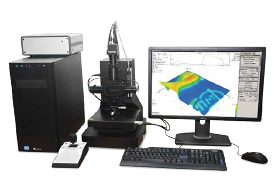
OSTEC ARTTOOL LIMITED COMPANY
Russia
IMOS Interference Microscope-nanoprofilometer enables accurate, quantitative, ISOcompliant noncontact surface measurements and characterization of micro and nanoscale surface characteristics, capturing up to two million data points in seconds. Choosing the right optical profilometer depends on your application requirements, including speed, accuracy, vertical range, automation and flexibility. IMOS optical surface profilometer provides powerful versatility in noncontact optical surface measurements. The system makes it easy and fast to investigate a wide range of surface types, including smooth, rough, flat, sloped and stepped surfaces. All measurements are nondestructive, fast and require no special sample preparation.
Request for a quote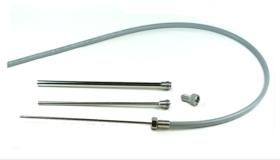
OSTEC ARTTOOL LIMITED COMPANY
Russia
FiPOS product line from Ostec & art photonics GmbH is a cluster of innovative fiber optic probes and fiber probe couplers designed for inline analytical analysis in a wide spectral range from UV to MidIR (550 cmˉ¹ to 55 550 cmˉ¹). FiPOS family of immersion fiber probes includes ATR, transmission, transflection, fluorescent, and diffuse reflection probes all compatible with any FTMIR, FTNIR or dispersion spectrometer, process photometer, IRLED, or QCL spectral sensor to use inline for PAT applications. FiPOS Fiber Probe Couplers (FPC) couple any FTIR spectrometer with various fiber optic probes and upgrade it to eliminate sampling and to run reaction monitoring inline. Our fiber probe couplers provide high coupling efficiency for ATR – absorption, transmission, or reflection process spectroscopy in a wide spectral range from UV to MidIR to use fiber-coupled FTIR not only with LNcooled MCT detectors but with TEcooled MCT and uncooled IR detectors as well.
Request for a quote
OSTEC ARTTOOL LIMITED COMPANY
Russia
IROS 03 Fourier infrared spectrometer is designed to record absorption spectra of solid, liquid, and gaseous substances in the near and medium IR region (including drugs, varnishes and paints, oil products, pharmaceuticals, polymer films, and fibers) with their subsequent identification, as well as for qualitative and quantitative analysis of mixtures containing several components. Main Advantages: - Unique misalignment-free, humidity and temperature change resistant Double Cat’s Eye interferometer - Sealed drainable optical unit - The ability to expand the spectral range using additional radiation sources, detectors and beam splitters - Three ports for connecting external devices - Great variety of extension modules IROS 03 FTIR Spectrometer can be equipped with a large number of extension modules. It makes possible to use IROS 03 for different common and specific applications.
Request for a quote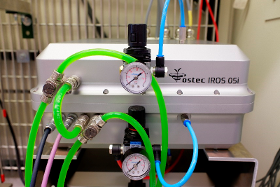
OSTEC ARTTOOL LIMITED COMPANY
Russia
IROS 05i is a special FTIR spectrometer designed for work in harsh conditions. This model allows solving a wide range of industrial problems, including process control, with the possibility of online (in situ) monitoring of industrial processes (in reactors or pipelines) both for laboratories and industry facilities. Features: - Completely tight metal case - Ports for connecting external cooler and purging with inert gases to protect and stabilize the optical unit in difficult environmental conditions - Module for connecting fiber optic probes (up to 2 simultaneously) Advantages: - Ability to connect 2 probes, allows working with the device in 2-channel mode, monitoring simultaneously processes taking place in 2 different reaction environments - Control software allows setting flexible routines with continuous analysis and evaluation of data obtained in real-time - Wide range of probes designed for use in corrosive environments, at high pressures and temperature, among others
Request for a quote
OSTEC ARTTOOL LIMITED COMPANY
Russia
IROS 05 FTIR spectrometer is designed to provide a wide range of sample measurement techniques in the most challenging environments, from the scientific laboratory to the industrial production line. Compact size, reasonable price, a unique set of accessories and high performance – these advantages of IROS 05 spectrometer allow it to fit most of research and field tasks as a midlevel spectrometer for academic and industrial applications. Features: - A wide array of functions due to various attached modules and detectors - Capability of additional external devices connection for IR spectrum registration - Stability to temperature fluctuation and vibration due to unique patented interferometer design - Humidity resistance because of ZnSe optics - Spectrum recording control buttons on device case for fast routine operations - Compact and light-weight IROS 05 can be combined with wide-range IR microscope IR M series and FiPOS ATR fiber probes.
Request for a quote
OSTEC ARTTOOL LIMITED COMPANY
Russia
OMOS M series analytical metallographic systems make perfect solutions for the microstructure of materials automatic analysis. When you image and analyze samples, you are often faced with complex and interrupted processes that can make tasks take much longer than you want them to. OMOS M series microscopes have vast experience in bringing together optical precision, automation, analytical power, and data management via the workfloworiented system. The new M series analytical metallographic system product range takes this one step further, offering peerless flexibility and ease of use that can make any task a controlled workflow. Ostec is dedicated to ensuring that the best solutions are available for your work, from microscopes and digital cameras to software and data storage. OMOS M series microscopes bring all of our experience to you, giving you control over every aspect of your hardware, workflow
Request for a quote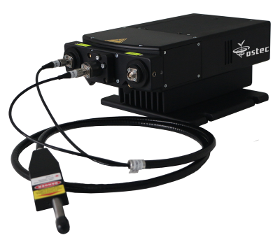
OSTEC ARTTOOL LIMITED COMPANY
Russia
RAMOS RS120 compact Raman dual-channel spectrometer is a standalone research instrument designed to perform spectral measurements with capabilities at the level of high-end systems. Spectrometer RAMOS RS120 has a rigid, moving parts free design that does not require adjustments, has both high sensitivity and high spectral resolution, and can be equipped with one or two single-mode lasers 488/633 nm or 532/785 nm simultaneously. RAMOS RS120 can be equipped with Raman fiber optic probes. A wide range of capabilities, high reliability, and compact size allow using RAMOS RS120 for various scientific and industrial applications. The objects for complex research can be semiconductors, minerals, polymers, pharmaceutical and biological substances, coatings, and other materials. RAMOS RS120 spectrometer can be equipped with either built-in 532 nm or 785 nm laser or both lasers simultaneously. 488/633 nm lasers are available on request.
Request for a quote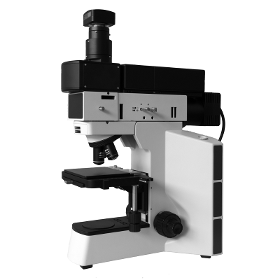
OSTEC ARTTOOL LIMITED COMPANY
Russia
RAMOS U120 compact single-channel confocal Raman microscope is designed for micro spectral measurements with capabilities at the level of high-end systems. RAMOS U120 microscope has a rigid, moving parts free design that requires no adjustments, has both high sensitivity and high spatial resolution. A wide range of capabilities, high reliability, and compact size allow using RAMOS U120 for various scientific and industrial applications. Main features: - Research level optical microscope with advanced measurement techniques - Submicron resolution due to confocal design - Automatic adjustment of laser power - Wide dynamic range and extremely high sensitivity of innovative sCMOS detector - Edge or Notch filters for Stokes and AntiStokes spectroscopy - Automatic switching between Raman, optical and combined Raman-optical modes - Fiber optic Raman probe option - Raman mapping with motorized sample stage - Laser Safety Class 3B
Request for a quoteDo you sell or make similar products?
Sign up to europages and have your products listed

NT-MDT LLC
Russia
AFMSICMRaman triple synergy of powerful nanocharacterization techniques Hopping mode ion conductance microscopy noncontact imaging of living cells and jelly surfaces QNM power of AFM and SICM quantitative nanomechanical studies Smart Patch Clamp automatic nanopipette targeting for ion channel studies HighSpeed LongRange HighResolution mapping at nanoscale Nanoinjection nanopipettes with SICM feedback control can be used for local subpicoliter injections to single cells SICM (Scanning Ion Conductance Microscopy) is an SPM technique which uses nanopipette (sharp glass electrode) for noncontact 3D surface mapping at high resolution. In SICM, the probe to sample distance is controlled via the decrease of ionic current flowing through the tip, as it approaches the sample surface. Biophys.Journ. 73, 653658
Request for a quote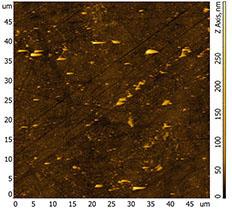
NT-MDT LLC
Russia
Atomic Force Microscopy is a widely used and powerful technique for investigating materials at a nanoscale range. However, the technique is not simple to use, which elicits varied results between researchers with different levels of experience. NTMDT Spectrum Instruments (formerly NTMDT) have created the intelligent software, ScanT™, inspired by neural networks to make dynamic amplitude modulation AFM (AMAFM) easy for researchers of every skill level. The AFM amplitude modulation (AM) mode, also known as “tapping” or “semicontact”, is based on dependency of cantilever amplitude oscillation on distance between sample surface and tip. This mode is often favored over other AFM modes because it provides minimal impact on the sample and the tip, which can help to preserve both.
Request for a quote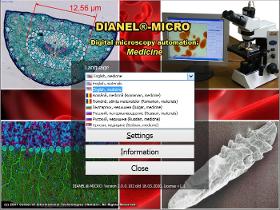
CENTER OF INFORMATION TECHNOLOGIES NELIAN LLC
Russia
Digital Microscopy Software for automation, visualization and measurement in Medicine and Biology Dianel®-Micro is software that pieces together a biological dark-field microscope and PC into a powerful workstation and research complex Image magnification up to 8000x and resolution of 5 Megapixels and more Full HD video Live blood and saliva analysis to fit a health-improving program Audio record with commentaries of an expert Automatic report making A vast range of patterns, recommendations on programs of prophylactics and health-improvement Examination of dynamically changing micro objects to compare changes in time and to analyze a micro probe even after its destruction Dianel®-Micro makes possible to re-equip laboratories at minimal costs, to motivate the patients to have procedures and health-improving programs in your center, to open diagnostic cabinets and earn more by providing overall diagnostic services Free two-mounts trial available Free software updates
Request for a quote
NT-MDT LLC
Russia
Early warning and forecasting of the deterioration of engineering materials operating in extreme conditions is a high priority activity within many industrial plants. The ability to perform diagnostics on a plant’s metal work without taking it offline is particularly of high value to industries in the energy, processing and other sectors. Currently diagnostic equipment is only able to discover deterioration in operational pipework and associated equipment after its condition has already reached a dangerous stage of degradation. SOLVER Pipe is a new highprecision and reliable diagnostic system that allows plant managers the ability to decrease risks and achieve incidentfree operation through anticipatory control and scheduled maintenance of materials and equipment within their industrial facilities.Advantage over electron microscopy compact, cheap and does not require complex vacuum technology.
Request for a quote
NT-MDT LLC
Russia
Scanning Thermal Microscopy (SThM) is an advanced SPM mode intended for simultaneous obtaining nanoscale thermal and topography images. NTMDT’s SThM kit is able to visualize temperature and thermal conductivity distribution at the sample surface. The SThM system hardware includes electronic controller, software, and probes. SThM mode of operation with an AFM requires a specialized probe with a resistor built into the cantilever. NTMDT’s SThM module allows one to monitor the resistance changes correlated with the temperature at the end of the probe. So the system is able to monitor relative changes of sample temperature and thermal conductivity. NTMDT’s thermal probes provide better than 100 nm lateral resolution for both topography and thermal images. The specialized SThM cantilever, made of SiO2 with a thin metal layer, is deposited on the probe in such a way that the highest resistance portion of the layer is concentrated near the tip apex.
Request for a quote
NT-MDT LLC
Russia
The new digital controller PX Ultra turns your routine SPM device into easytouse instrument for scientific breakthroughs and advanced research The controller has 5 lockins amplifiers for uponelevel multitechnique leading edge measurements. The up to 5 MHz bandwidth for use of HF cantilevers and high harmonic oscillations’ action for the advanced investigation of electrical and mechanical properties at nanoscale. Lownoise piezoscanner control affords carrying out research by the same scanning element in the range from nanometers to tens and hundreds of micrometers.Ease of upgrade and functional extension of controller due to convenient slot organization. Regularly updated software. LabView compatibility for users’ custom applications. HybriD Mode™compatible.Fully automated adjustment for defined measuring mode. Digital and analogue peripheral ports. Ask online support service.
Request for a quote
NT-MDT LLC
Russia
Stateoftheart HybriD 2.0 Control Electronics incorporates highspeed digital lockin amplifiers (LIA) and phase locked loop detector (PLL) for advanced oscillatory resonance modes Amplitude Modulation with Frequency Imaging (AMFI) and Frequency Modulation (FM) modes. They provide exceptional level of spatial resolution of challenging flat and soft samples (selfassembled molecular structures etc.) thanks to ultraprecise control of the tipsample interaction force. Additionally they allow mapping of its mechanical properties. The two images below show topography and probe resonant frequency distribution over lamellar arrangement of short alkane C36H74 on graphite with a spacing of 4.5 nm. One can also see a couple of adsorbates formed on the lamellar surface by disordered alkane chains which are rarely observed by the traditional AM mode.
Request for a quote
NT-MDT LLC
Russia
HD Scanning Thermal Microscopy (HD SThM) allows studying local thermal properties simultaneously with QNM measurements. From the hardware point of view it was implemented using AppNano VertiSense™ thermocouple probes. The thermal conductivity and temperature mapping modes (CMM, TMM) can be realized by positioning the AFM laser at the end or the central part of the probe, respectively. HD mode working principle allows exceptional spatial resolution of SThM measurements in comparison to conventional Amplitude Modulation (AM) mode. That was demonstrated in TMM of a microheater sample. SThM and HybriD mode is the winning combination for distinguishing between the constituents of polymer blends as demonstrated in the example of a blend of polystyrene (PS) with low density polyethylene (LDPE) (see below). The difference in thermal conductivity of the polymers (PS – 0.12 W/mK; LDPE – 0.33 W/mK) allows the assignment of the colder matrix to LDPE and the hotter islands to PS.
Request for a quote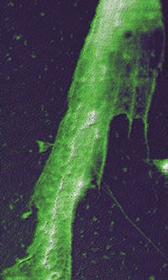
NT-MDT LLC
Russia
Tip Enhanced Raman Scattering (TERS, nanoRaman) is the technique for enhancement of weak Raman signals and for superresolution Raman imaging with spatial resolution less than 10 nm. As a result of comprehensive research performed together with NTMDT SI customers and partners, we are now able to offer to AFMRaman customers mass produced reproducible TERS probes. TERS imaging requires prolonged tipsample contact at each scanning point but Contact AFM is destructive for both the tip and the sample. Thereby, HD mode is a superior technique for cantilevertype TERS since it noticably increases the tip lifetime and makes possible TERS imaging of soft, loose and fragile samples. Vacuum measurements in amplitude modulation (AM) mode requires unacceptably low scanning speeds because of extremely high Qfactor of AFM probes. Being a nonresonant mode, HD mode allows at least 10 times faster imaging speed.
Request for a quote
NT-MDT LLC
Russia
Tip Enhanced Raman Scattering (TERS, nanoRaman) is the technique for enhancement of weak Raman signals and for superresolution Raman imaging with spatial resolution less than 10 nm. As a result of comprehensive research performed together with NTMDT SI customers and partners, we are now able to offer to AFMRaman customers mass produced reproducible TERS probes. TERS imaging requires prolonged tipsample contact at each scanning point but Contact AFM is destructive for both the tip and the sample. Thereby, HD mode is a superior technique for cantilevertype TERS since it noticably increases the tip lifetime and makes possible TERS imaging of soft, loose and fragile samples. Thanks to highspeed HybriD 2.0 Control Electronics the approach and withdrawal optical response signal curve (PMT) can be recorded and processed in realtime. This allows to separate the nearfield from farfield component of optical response and to map it with spatial resolution limited by the tip radius.
Request for a quote
NT-MDT LLC
Russia
Thermoelectric studies of nanoscale structures like np junctions, conductive nanowires, graphene oxide etc. are currently of a great interest. HD Scanning Thermoelectric Microscopy (HD SThEM) allows nondestructive mapping of Seebeck coefficient with tip radiuslimited spatial resolution. HD SThEM working principle is based on direct measurement of generated voltage when conductive tip and sample under different temperatures contact each other during fast force spectroscopy measurements.
Request for a quoteResults for
Measurements - Import exportNumber of results
47 ProductsCompany type
Category
- Optical measuring equipment (26)
- Electromagnetic compatibility measuring equipment (7)
- Measurement and control instruments (5)
- Scientific research centres and laboratories (2)
- Measurement - Equipment & Instruments (1)
- Automation - systems and equipment (1)
- Laboratory equipment and instruments (1)
- Fire extinguishers (1)
- Fire protection equipment (1)
- Glass hollowware - household articles (1)
